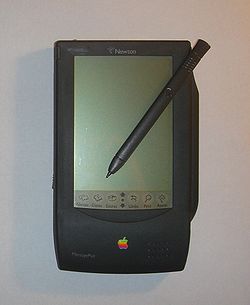 Tomorrow is a big day. Apple will be revealing a brand new product to the masses. While we don’t know what it will be called, we’re quite certain Jobs will be unveiling the much-anticipated Apple Tablet. While the Apple Tablet may very well revolutionize the tablet industry–as their previous products have done many times before–it wouldn’t be where it is without those that came before it. Below you will find a list of what we believe to be the top slates.
Tomorrow is a big day. Apple will be revealing a brand new product to the masses. While we don’t know what it will be called, we’re quite certain Jobs will be unveiling the much-anticipated Apple Tablet. While the Apple Tablet may very well revolutionize the tablet industry–as their previous products have done many times before–it wouldn’t be where it is without those that came before it. Below you will find a list of what we believe to be the top slates.
Apple MessagePad/The Newton:
The Apple MessagePad was the first powerful PDA device. Introduced in 1993, the MessagePad ran on the Newton OS and featured handwriting recognition software which would learn a user’s natural handwriting. The original version only supported portrait viewing, but future iterations allowed the screen to be rotated and viewed in landscape mode as well. The device used Four AAA batteries, which hampered battery life. It wasn’t until Apple switched to the use of AA batteries that the Newton could be used for extended periods of time. Perhaps the biggest shortfall of the Newton was the handwriting software’s learning curve. It took the software anywhere from two weeks to two months to learn a user’s handwriting style. This delay, coupled with the lack of desktop connectivity for most of the lines life-time, forced Apple to abandon the project in 1998.
Panasonic Toughbook 08:
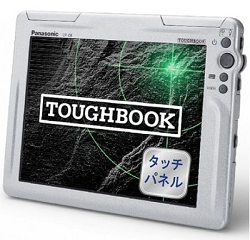 The Panasonic Toughbook 08 was a tablet built for abuse. The magnesium alloy case is purportedly 20 times stronger than that of standard plastics used in tablet and laptop construction. The Toughbook 08 comes with a 10.4 inch LED touchscreen and only weighs 2.6 pounds. The device comes with wifi, bluetooth and an ethernet slot. This tablet has a SD expansion slot, which is necessary given its paltry 64MB of RAM. Turns out that while consumers want a rugged and sturdy alternative, aesthetically unpleasing products such as the Toughbook 08 will struggle. Who would have thought? As such, the Panasonic Toughbook 08 is no longer in production.
The Panasonic Toughbook 08 was a tablet built for abuse. The magnesium alloy case is purportedly 20 times stronger than that of standard plastics used in tablet and laptop construction. The Toughbook 08 comes with a 10.4 inch LED touchscreen and only weighs 2.6 pounds. The device comes with wifi, bluetooth and an ethernet slot. This tablet has a SD expansion slot, which is necessary given its paltry 64MB of RAM. Turns out that while consumers want a rugged and sturdy alternative, aesthetically unpleasing products such as the Toughbook 08 will struggle. Who would have thought? As such, the Panasonic Toughbook 08 is no longer in production.
Motion M1200:
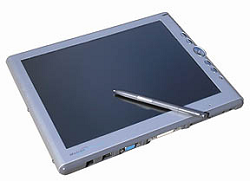 Long before the Apple iSlate (or iPad, or whatever they’ll be calling it) was even a thought in our minds, there was the Motion M1200. The first “slate,” the M1200 sported a massive 12.1 inch display, giving it a competitive advantage over similar tablets which used the smaller 10.4 inch display. Although built with a magnesium alloy chassis, the Motion M1200 was not designed to take a beating like the ToughBooks. The M1200 came with an 833 MHz mobile Pentium 3 processor, 128 to 512 MB of RAM, and either a 20, 40, or 60 GB hard drive. The advertised price of this tablet was $2,200 in 2002, which undoubtedly had something to do with the low adoption rate.
Long before the Apple iSlate (or iPad, or whatever they’ll be calling it) was even a thought in our minds, there was the Motion M1200. The first “slate,” the M1200 sported a massive 12.1 inch display, giving it a competitive advantage over similar tablets which used the smaller 10.4 inch display. Although built with a magnesium alloy chassis, the Motion M1200 was not designed to take a beating like the ToughBooks. The M1200 came with an 833 MHz mobile Pentium 3 processor, 128 to 512 MB of RAM, and either a 20, 40, or 60 GB hard drive. The advertised price of this tablet was $2,200 in 2002, which undoubtedly had something to do with the low adoption rate.
Fujitsu Stylistic ST5010:
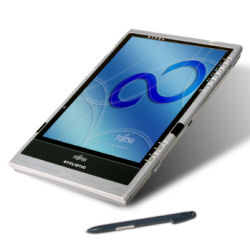 One of the first slates to be produced by a big manufacturer was the Fujitsu Stylistic ST5010. Taking a page from Motion’s book, the Fujitsu Stylistic ST5010 came with a huge 12.1 inch screen. Weighing in at 3.4 pounds, the tablet was larger than most, but still light enough for extensive travel; however the four hour battery life was not conducive to this end. Boasting a 1 GHz Pentium M processor, the ST5010 was faster than most of its competitors in the space. Unfortunately, the larger screen led to smaller buttons which were hard to push. The ST5010 was also mysteriously missing a four-way navigation pad which made navigation quite a pain.
One of the first slates to be produced by a big manufacturer was the Fujitsu Stylistic ST5010. Taking a page from Motion’s book, the Fujitsu Stylistic ST5010 came with a huge 12.1 inch screen. Weighing in at 3.4 pounds, the tablet was larger than most, but still light enough for extensive travel; however the four hour battery life was not conducive to this end. Boasting a 1 GHz Pentium M processor, the ST5010 was faster than most of its competitors in the space. Unfortunately, the larger screen led to smaller buttons which were hard to push. The ST5010 was also mysteriously missing a four-way navigation pad which made navigation quite a pain.
Samsung Q1 Ultra:
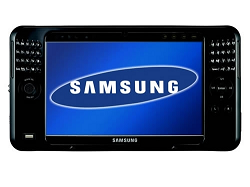 The Samsung Q1 was one of the first projects built under Microsoft’s Origami project. The Q1 can boot directly into Windows XP or AVS mode. With AVS mode, the Q1 boots to a media player with no Windows Explorer interface. The Q1 Ultra is extremely lightweight, coming in at just over 1.7 pounds. The Intel Celeron M ULV chip running at 900 MHz was supposed to help with battery life, but the device could still only muster 3 hours. The 7 inch touchscreen was smaller than the standard we became accustomed to, and given its poor performance and short battery life, the Q1 Ultra was not well-received.
The Samsung Q1 was one of the first projects built under Microsoft’s Origami project. The Q1 can boot directly into Windows XP or AVS mode. With AVS mode, the Q1 boots to a media player with no Windows Explorer interface. The Q1 Ultra is extremely lightweight, coming in at just over 1.7 pounds. The Intel Celeron M ULV chip running at 900 MHz was supposed to help with battery life, but the device could still only muster 3 hours. The 7 inch touchscreen was smaller than the standard we became accustomed to, and given its poor performance and short battery life, the Q1 Ultra was not well-received.
iPod Touch:
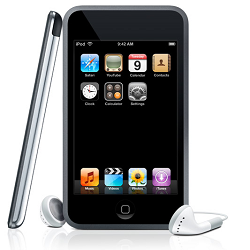 The iPod Touch was introduced to the masses in September of 2007. It comes with a 3.5 inch multi-touch display, and weighs only 4.2 ounces. The battery life in the first generation is sufficient, with up to 22 hours for audio, and 5 for video. Subsequent versions have improved battery life. It was the first of the iPod line to be able to access the iTunes store as well as Apple’s App Store, which greatly increased the number of third-party applications being offered to the platform. While not marketed as a slate, the iPod Touch, has all the functionality of its predecessors, along with the addition of multi-touch. The success of the iPod Touch has been prolific, with over 20 million sold in its first two years.
The iPod Touch was introduced to the masses in September of 2007. It comes with a 3.5 inch multi-touch display, and weighs only 4.2 ounces. The battery life in the first generation is sufficient, with up to 22 hours for audio, and 5 for video. Subsequent versions have improved battery life. It was the first of the iPod line to be able to access the iTunes store as well as Apple’s App Store, which greatly increased the number of third-party applications being offered to the platform. While not marketed as a slate, the iPod Touch, has all the functionality of its predecessors, along with the addition of multi-touch. The success of the iPod Touch has been prolific, with over 20 million sold in its first two years.
Lenovo U1:
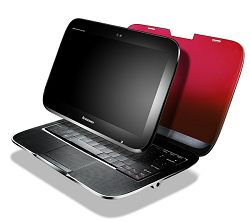 The Lenovo U1 is a netbook with a removable tablet. When docked, the U1 takes advantage of an Intel processor and runs Windows 7. However, when the tablet is removed, the U1 utilizes the 1 GHz Snapdragon processor and runs a Linux distro. While docked, the netbook weighs 3.8 pounds, but when removed, weighs only 1.6. The screen is 11.6 inches and supports multi-touch. While not in production yet, this hybrid was revealed at CES 2010 and has potential to disrupt the market. It will be interesting to see how the product handles being synced to the dock while running programs.
The Lenovo U1 is a netbook with a removable tablet. When docked, the U1 takes advantage of an Intel processor and runs Windows 7. However, when the tablet is removed, the U1 utilizes the 1 GHz Snapdragon processor and runs a Linux distro. While docked, the netbook weighs 3.8 pounds, but when removed, weighs only 1.6. The screen is 11.6 inches and supports multi-touch. While not in production yet, this hybrid was revealed at CES 2010 and has potential to disrupt the market. It will be interesting to see how the product handles being synced to the dock while running programs.
Compaq iPAQ:
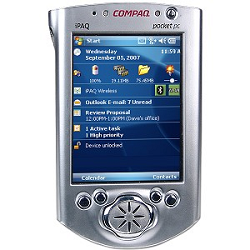 The Compaq iPAQ, introduced in 2000, was another advanced PDA device. It took advantage of a Windows interface which gave it multimedia functionality over its Palm rivals. Consumers were able to buy “sleeves” which added functionality; such as GPS, wireless networking, and extra batteries. The first model ran at 200 MHz, and had 64MB of RAM, while later versions had as much as 128 MB of RAM and a 624 MHz processor. The iPAQ line have undergone major revamps since HP’s acquisition of Compaq and are no longer being branded as the iPAQ. Instead, HP has decided to call the future iterations Personal Navigation Devices and Travel Companions. This is a good way to differentiate themselves from their competitor, since calling a product the i”Name” makes one think of something Apple-related.
The Compaq iPAQ, introduced in 2000, was another advanced PDA device. It took advantage of a Windows interface which gave it multimedia functionality over its Palm rivals. Consumers were able to buy “sleeves” which added functionality; such as GPS, wireless networking, and extra batteries. The first model ran at 200 MHz, and had 64MB of RAM, while later versions had as much as 128 MB of RAM and a 624 MHz processor. The iPAQ line have undergone major revamps since HP’s acquisition of Compaq and are no longer being branded as the iPAQ. Instead, HP has decided to call the future iterations Personal Navigation Devices and Travel Companions. This is a good way to differentiate themselves from their competitor, since calling a product the i”Name” makes one think of something Apple-related.
Microsoft Surface:
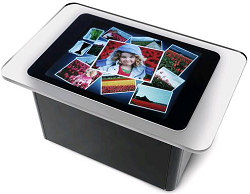 The Microsoft Surface is the only non-portable slate on the list. It has an incredible 30 inch multi-touch screen, but only has 2 GB of RAM, a 250 GB hard drive, and a 2.13 GHz Intel Core 2 Duo processor. The Surface is able to recognize different objects as well as register multiple users, which is where this product excels. We have one of these in our TechCrunch office and the multi-user recognition makes for great air hockey games, but it gets more use as a coffee table than anything else. This is definitely not made for personal use, but larger organizations such as hospitals could benefit from this technology.
The Microsoft Surface is the only non-portable slate on the list. It has an incredible 30 inch multi-touch screen, but only has 2 GB of RAM, a 250 GB hard drive, and a 2.13 GHz Intel Core 2 Duo processor. The Surface is able to recognize different objects as well as register multiple users, which is where this product excels. We have one of these in our TechCrunch office and the multi-user recognition makes for great air hockey games, but it gets more use as a coffee table than anything else. This is definitely not made for personal use, but larger organizations such as hospitals could benefit from this technology.
iSlate/iPad/Apple Tablet:
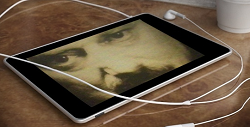 The hype over the product has caused such a media frenzy that one can’t go to any news site without seeing the tablet mentioned in some form or another. No no one outside of Apple knows what the tablet will be packing with regards to specs, but we do have our thoughts on some groundbreaking gesturing techniques. Even if the Apple Tablet disappoints, it will go down in history as one of the most groundbreaking slates created, simply because of the all the buzz surrounding the product.
The hype over the product has caused such a media frenzy that one can’t go to any news site without seeing the tablet mentioned in some form or another. No no one outside of Apple knows what the tablet will be packing with regards to specs, but we do have our thoughts on some groundbreaking gesturing techniques. Even if the Apple Tablet disappoints, it will go down in history as one of the most groundbreaking slates created, simply because of the all the buzz surrounding the product.